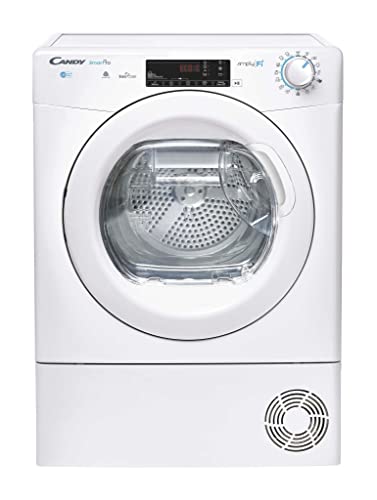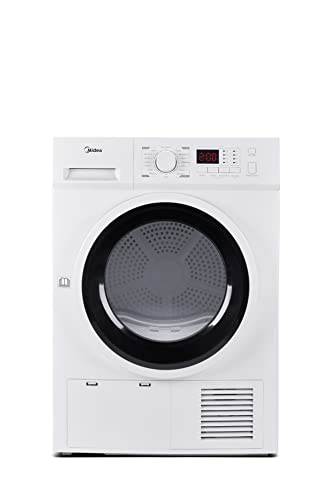Why Do So Many People Want To Know About Heatpump Dryer?
페이지 정보
작성자 Diana Lindley 댓글 0건 조회 26회 작성일 24-04-30 14:10본문
 How to Properly Use a Heatpump Dryer
How to Properly Use a Heatpump DryerIn contrast to conventional dryers, which use hot air to dry the clothes, a heat pump dryers use electricity to move water out of the fabric and into its compressor. The moisture is then dehumidified, and heated in the process creating a low-temperature drying process.
ENERGY STAR offers several heat pump dryers that have a 4-cubic-foot capacity, which is smaller than the standard American standard-sized models (which have a typical capacity of 7 cubic feet). The smaller sizes are less bulky and could qualify for rebates in a few states.
Energy Efficiency
A heatpump dryer is renowned for its energy efficiency. It uses air energy to dry clothes and doesn't create waste heat like traditional dryers. In the end, heatpump dryers can help homeowners save up to $600 in energy costs over the life of the appliance. Utilizing renewable resources also makes them less environmental damaging than traditional dryers.
The efficiency of energy-efficient heatpump dryers can be measured by COP (coefficient-of-performance) which is the ratio between cooling capacity and the power consumption. The higher the COP the more efficient the heatpump. They use less energy than regular dryers.
The low temperature of the heat pump dryer can reduce drying time, as well as the energy consumption. This is due to the system's dehumidification capability increases. Jia et al. (1993) examined the combination heat pump and microwave dryer using a thermosyphon loop for low temperature grain. They found that it consumed less than 2.1 J per kg of water taken away.
Heat pumps are also used together with other drying methods to increase energy efficiency. For example, atmospheric freeze drying can be combined with a heat pump to produce a process that is more economical than vacuum freeze drying and gives products that are similar to those made by vacuum freeze drying (Bantle and others. 2009).
While the initial investment of a heatpump dryer may be greater than the standard dryer, a number of rebate programs offer incentives to buying these appliances. For example, the IRA's Energy Star program provides rebates to households that have reduced their energy consumption throughout the home by 35 percent or more. This makes the upfront cost of heatpump dryers less expensive for families with a tight budget.
A heatpump dryer could be an excellent option for those who are seeking the most energy efficient option. It is estimated that the heatpump dryer could reduce energy consumption by up to 40% when compared with traditional dryers, making it one of most efficient methods to dry clothes at home.
Convenience
While dryers with heat pumps are fairly new to the United States, they're gaining popularity due to their energy efficiency and climate advantages. They're also gentler on clothes, as they utilize lower temperatures to dry them and moisture sensors stop them from overheating. These features help reduce shrinkage and damage, making them more affordable than traditional electric dryers.
The closed-loop system that dryers using heat pumps use to capture moisture and recycle air is what differentiates them from other models. Instead of heating and then dumping hot air and water into the air through exhaust vents, they utilize refrigerant and compressor to recycle the same air and collect excess moisture.
The process is similar to that of a refrigerator in reverse: the compressor heats the air and transfers it to an evaporator coil that is cold in which the water vapor is condensed into the pan. The dry air is recirculated back into the drum, while the excess moisture is sent into a drain pan. The hose for condensation is connected to the sewer line of your home, thus not needing a vent.
In addition to reducing energy costs they are also quieter than traditional dryers, with some offering sound-dampening technology for added convenience. They are heat pump tumble dryers any good also less maintenance-intensive than standard dryers. Because they don't need vents to work they are equipped with fewer components and less potential for breakage. They also do not require a gas line, like vented dryers which can be costly to replace or repair.
The only disadvantage to convenience is that heat pump dryers can take longer to dry than traditional models. This is due to the fact that heat dryers operate at lower temperatures and could require several cycles to dry the laundry. This is compensated by reducing the electricity consumption or by using energy efficient modes.
The Miele T1 heat-pump dryer for instance, can save up to 60% on energy consumption, and is quieter due to the vibration reduction system. It also has smart functions such as EcoDry or PerfectDry which analyzes the calcium content of your water to ensure that your drying is safe and consistent. The dryer is WiFI-compatible and can be controlled remotely with a smartphone application.
Easy Installation
A heat pump dryer uses an air compressor that transfers heat from the air to the laundry. It also doesn't need a vent, so it can be installed virtually everywhere in your home. This makes it a great choice for tiny homes and accessory dwelling units (e.g., an apartment above the garage) and even additions. You can stack a heat-pump dryer and washer to make space.
The main disadvantage of this kind of dryer is that it takes longer to dry a load than traditional vented dryers. It's less energy-intensive and doesn't release any unpleasant odors. It also reduces the amount of laundry you have to wash and can help keep your fabrics looking fresher for longer.
The dryers for heat pump are available in small sizes which are easy to install even in tight spaces. If you're looking for a dryer that is larger, you should choose an energy star-certified heat unit with larger drums. There are also heat pump dryers with an infrared heater that speeds up the drying process by heating the fabric and clothes directly.
The first step in installing a heat-pump dryer is to prepare your intended installation area. To ensure adequate ventilation, remove any clutter from the area, and close off the area around the dryer. Prepare the power outlet by ensuring that it is only for this appliance. Make sure the amperage and voltage are in line with the specifications of the user manual. Connect the dryer to an outlet that is powered by electricity and run a brief test cycle. Clean the lint filters following every use. Clean and inspect the exhaust pipe on a regular basis to avoid getting clogged.
In order to get the most out of your heat pump dryer, make sure that you follow the guidelines of the manufacturer for the size of the load and temperature settings. This will enable your machine's energy consumption to be minimized and it will operate more efficiently. It is also essential to schedule regular maintenance with a certified technician to make sure everything is operating correctly. They can also examine your ductwork for damage or blockages that could be reducing efficiency.
Maintenance
If properly used, heat pump dryers are a valuable investment in the home. To ensure they function optimally and efficiently all year long they require regular maintenance, cleaning, and checkups. These tips can help you extend the life of your dryer, reduce energy consumption and save money.
The condenser drain and the lint filters must be free of obstructions. The lint filter should be removed and cleaned each time you use it to avoid the clogging that can cause reduced performance and energy efficiency. It is also recommended to regularly check the vent hose to ensure it is clear of blockages or kinks. A blocked vent can prolong drying times and could pose an fire risk. You should clean the vent hose using a dryer lint remover or a vacuum attachment on a regular basis to ensure that it is properly cleaned.
Regularly cleaning the heat exchanger is also vital. This part transfers heat to the clothes from the air and can become clogged over time with lint, resulting in lower efficiency and shorter cycles. The user's manual of your dryer will give you detailed instructions on how to clean the heat exchanger. Once you've cleaned your heat exchanger, rinse and dry it thoroughly prior to placing it back into the dryer.
Place the dryer in an area that is well ventilated, away from obstructions such as walls and himalaya.asia other structures. This will ensure that the dryer is adequately ventilated and prevent overheating.
You should also wash the exterior and drum of your dryer on a regular basis. This will stop stains from forming and keep the interior of the machine free from dirt dust and dirt. You can apply a damp cloth or mild detergent to wipe down the surface of your dryer by avoiding harsh cleaners that may damage the finish.
It is recommended that in addition to these tips to seek out professional maintenance for your heat pump-dryer at least once a year. A professional can assess and clean the internal components of your dryer to ensure they are in good working order.

댓글목록
등록된 댓글이 없습니다.

